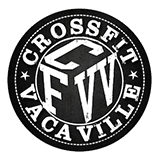What is CrossFit
UNDERSTANDING CROSSFIT
The aims, prescription, methodology, implementation, and adaptations of CrossFit are collectively and individually unique, defining of CrossFit, and instrumental in our program’s successes in diverse applications.
AIMS
From the beginning, the aim of CrossFit has been to forge a broad, general, and inclusive fitness. We sought to build a program that would best prepare trainees for any physical contingency—prepare them not only for the unknown but for the unknowable. Looking at all sport and physical tasks collectively, we asked what physical skills and adaptations would most universally lend themselves to performance advantage. Capacity culled from the intersection of all sports demands would quite logically lend itself well to all sport. In sum, our specialty is not specializing. The second issue (“What is Fitness?”) of the CrossFit Journal details this perspective.
PRESCRIPTION
The CrossFit prescription is “constantly varied, highintensity, functional movement.” Functional movements are universal motor recruitment patterns; they are performed in a wave of contraction from core to extremity; and they are compound movements—i.e., they are multi-joint. They are natural, effective, and efficient locomotors of body and external objects. But no aspect of functional movements is more important than their capacity to move large loads over long distances, and to do so quickly. Collectively, these three attributes (load, distance, and speed) uniquely qualify functional movements for the production of high power. Intensity is defined exactly as power, and intensity is the independent variable most commonly associated with maximizing favorable adaptation to exercise. Recognizing that the breadth and depth of a program’s stimulus will determine the breadth and depth of the adaptation it elicits, our prescription of functionality and intensity is constantly varied. We believe that preparation for random physical challenges—i.e., unknown and unknowable events—is at odds with fixed, predictable, and routine regimens.
METHODOLOGY
The methodology that drives CrossFit is entirely empirical. We believe that meaningful statements about safety, efficacy, and efficiency, the three most important and interdependent facets of any fitness program, can be supported only by measurable, observable, repeatable facts, i.e., data. We call this approach “evidence-based fitness.” The CrossFit methodology depends on full disclosure of methods, results, and criticisms, and we’ve employed the Internet (and various intranets) to support these values. Our charter is open source, making codevelopers out of participating coaches, athletes, and trainers through a spontaneous and collaborative online community. CrossFit is empirically driven, clinically tested, and community developed.
IMPLEMENTATION
In implementation, CrossFit is, quite simply, a sport—the “sport of fitness.” We’ve learned that harnessing the natural camaraderie, competition, and fun of sport or game yields an intensity that cannot be matched by other means. The late Col. Jeff Cooper observed that “the fear of sporting failure is worse than the fear of death.” It is our observation that men will die for points. Using whiteboards as scoreboards, keeping accurate scores and records, running a clock, and precisely defining the rules and standards for performance, we not only motivate unprecedented output but derive both relative and absolute metrics at every workout; this data has important value well beyond motivation.
ADAPTATIONS
Our commitment to evidence-based fitness, publicly posting performance data, co-developing our program in collaboration with other coaches, and our open-source charter in general has well positioned us to garner important lessons from our program—to learn precisely and accurately, that is, about the adaptations elicited by CrossFit programming. What we’ve discovered is that CrossFit increases work capacity across broad time and modal domains. This is a discovery of great import and has come to motivate our programming and refocus our efforts. This far-reaching increase in work capacity supports our initially stated aims of building a broad, general, and inclusive fitness program. It also explains the wide variety of sport demands met by CrossFit as evidenced by our deep penetration among diverse sports and endeavors. We’ve come to see increased work capacity as the holy grail of performance improvement and all other common metrics like VO2 max, lactate threshold, body composition, and even strength and flexibility as being correlates—derivatives, even. We’d not trade improvements in any other fitness metric for a decrease in work capacity.
CONCLUSIONS
The modest start of publicly posting our daily workouts on the Internet beginning six years ago has evolved into a community where human performance is measured and publicly recorded against multiple, diverse, and fixed workloads. CrossFit is an open-source engine where inputs from any quarter can be publicly given to demonstrate fitness and fitness programming, and where coaches, trainers, and athletes can collectively advance the art and science of optimizing human performance.
WHAT IS CROSSFIT?
Click here: Understanding Crossfit



 Coach
Coach Coach
Coach

 Coach
Coach Coach
Coach Coach
Coach Coach
Coach Co-owner, Nutritionist, Coach
Co-owner, Nutritionist, Coach Coach
Coach Coach
Coach Coach
Coach Manager / Coach
Manager / Coach Coach
Coach Coach
Coach Coach
Coach Coach
Coach Owner/Coach
Owner/Coach Coach
Coach